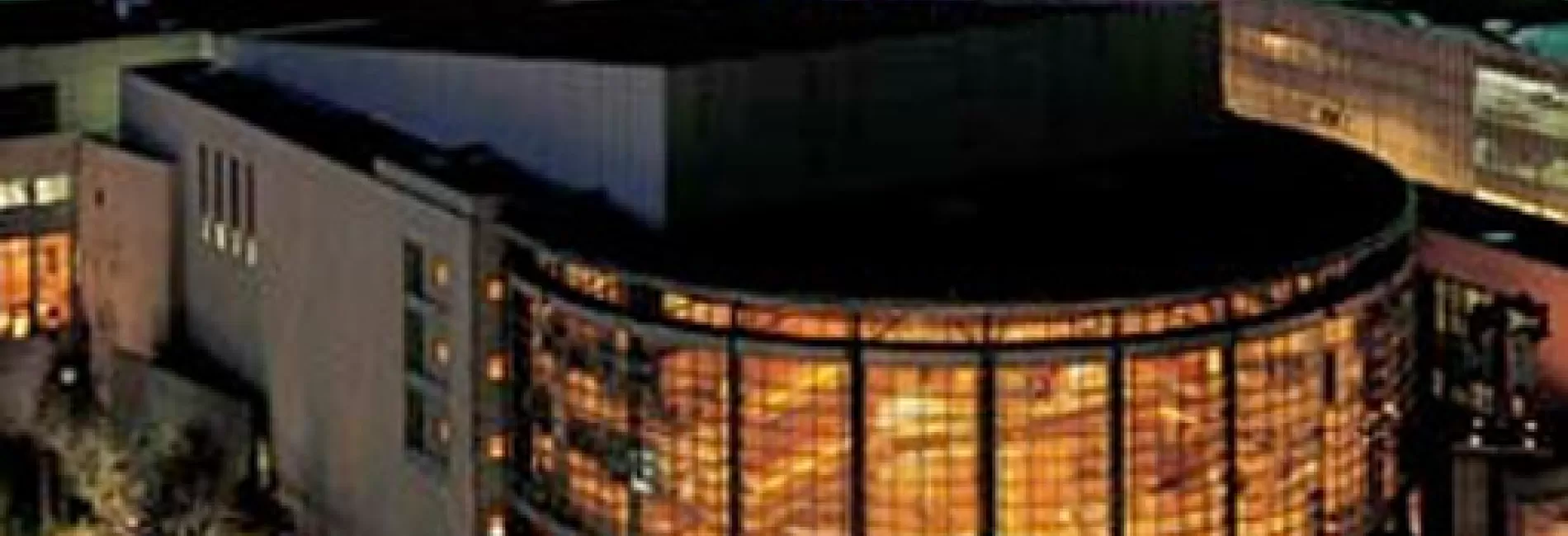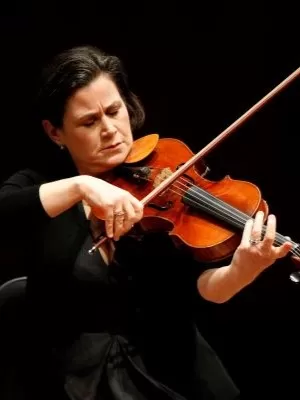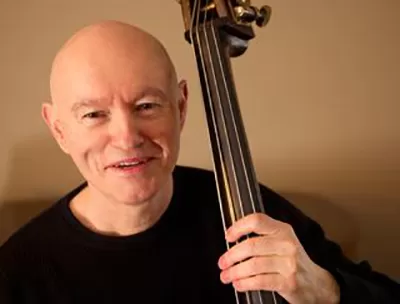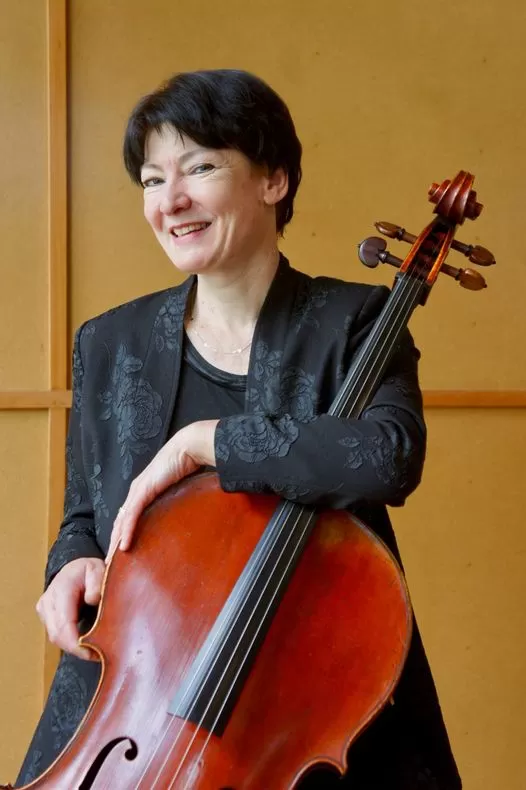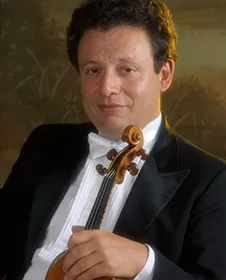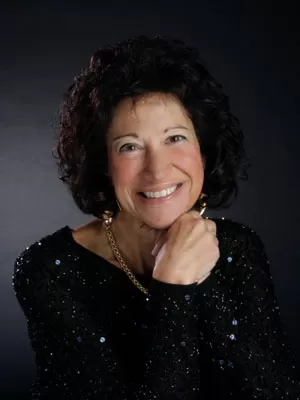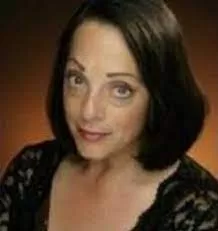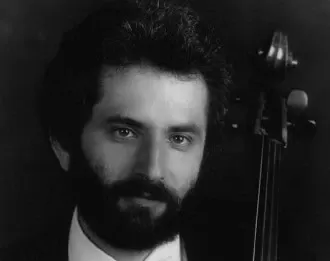Apr 12, 1999 - 7:30 pm
| Quartet No. 3, Op. 46 (Terezín, 1943) | Viktor Ullmann (1898-1944, Auschwitz) |
|---|---|
Mikhail Shmidt, violin Leonid Keylin, violin Susan Gulkis, viola Mara Finkelstein, cello |
|
| Poems from the Holocaust (1995-96) West Coast Premiere |
Allan Blank (b. 1925) |
Mark Bernat, double bass Julie Mirel, mezzo-soprano Mina Miller, piano |
|
| Lied ohne Worte (Terezín, 1942) | Frantisek Domazlicky (1913-1995) |
Mikhail Shmidt, violin Leonid Keylin, violin Susan Gulkis, viola Mara Finkelstein, cello |
|
| Serenata (Terezín, 1942) United States Premiere |
Robert Dauber (1922-1945, Dachau) |
Leonid Keylin, violin Mina Miller, piano |
|
| Gavotte (Terezín, 1942) | Egon Ledec (1889-1944, Auschwitz) |
Mikhail Shmidt, violin Leonid Keylin, violin Susan Gulkis, viola Mara Finkelstein, cello |
|
| Trio in D Minor Op. 3 (1895-96) | Alexander Zemlinsky (1872-1942) |
Laura DeLuca, clarinet David Tonkonogui, cello Mina Miller, piano |
|
Quartet No. 3, Opus 46 (Terezín, 1943) - Viktor Ullmann (1898-1944, Auschwitz)
There was a crossing of paths between composers Viktor Ullmann and Alexander Zemlinsky. While subject to the turmoils of the first half of the 20th century, Zemlinsky had a full and productive career; Ullmann's life and career, like that of so many others, ended prematurely in the gas chambers of Auschwitz.
Born in Silesia on New Year's Day 1898, Viktor Ullmann was raised and educated in Vienna. At an early age he became an active member of Schoenberg's circle, and was appointed as an assistant to Zemlinsky in Prague. He was invaluable to his mentor in the preparation of operas for performance and as a conductor. Throughout the 1930s he composed, taught, and wrote scholarly essays in several musical journals. He was also an active devotee of Rudolf Steiner's school of Anthroposophy.
In 1942 Ullmann was incarcerated in Terezín, where he was given the tasks of organizing concerts, lecturing on music anthroposophy and other subjects, and functioning as a music critic. Ullmann was in the very center of the intellectual and artistic activity in Terezín which provided such a source of strength, courage and mental discipline to the community. The astonishing cultural achievements were made possible by the decision of the German authorities to deflect awareness of the systematic massacre of Europe's Jews by presenting this one concentration camp to international inspectors as a showcase model town -- a "Paradise Ghetto".
The psychological resistance to the daily terrors of a concentration camp was epitomized by Ullmann who wrote "---it must be emphasized that Theresienstadt has served to enhance, not to impede, my musical activities, that by no means did we sit weeping on the banks of the waters of Babylon, and that our endeavor with respect to Arts was commensurate with our will to live."
Ullmann was unusually prolific, producing in Terezín his opera The Emperor of Atlantis, his last three piano sonatas, and the String Quartet No. 3. His two earlier quartets from the 1920s and 1930s are lost.
Poems from the Holocaust (1995-96) - Allan Blank (b. 1925)
Allan Blank was born in New York City in 1925, and studied at Juilliard, Washington Square College, the University of Minnesota, and the University of Iowa. He was a violinist with the Pittsburgh Symphony Orchestra, and taught at a number of schools and universities. Currently Mr. Blank is Professor Emeritus at Virginia Commonwealth University, where he taught from 1978 to 1996.
Poems from the Holocaust, was inspired by conversations and collaboration with doublebassist Mark Bernat, when both were faculty members at Virginia Commonwealth University.
Allan Blank offers the following notes:
The work took place slowly. Makh Tsu Di Eygelekh (Close Your Precious Eyes), the fifth number in this seven movement work, was written first. I came across the poem in a book called Bearing the Unbearable by Frieda W. Aaron. Its theme of a mother talking to her child, as she carries it in her arms, suggested a basic approach that I adapted. That was to find texts that speak to or about a child, or present what a child witnesses as related to the Holocaust. Since this first text choice was in Yiddish I had to decide if I wanted to restrict other texts to Yiddish or mix in other languages. After perusing a number of collections I came up with the Abraham Sutzkever poem Shpieltziag (Toys), from the Penguin Book of Modern Yiddish Verse. Formally the composition became more complex because I had to find ways to balance the needs for internal variety. Now two texts centered on a mother’s voice to a child; I had to consider another angle. Years earlier I had attempted to set some poems written by children in the Theresienstadt concentration camp. One of these poems, that has since been widely used, is called I Never Saw Another Butterfly. While I never completed those earlier attempts, I decided to take another look at the poems. I found three, At Terezín (number two in my set), Man Proposes, God Disposes (number four) and The Butterfly (number six), that satisfied my needs for voice, variety and range of observation. That rounded out the poems; now I had to decide how I would open and close the work.
I had to plan an opening section that would prepare the listener for the mood of the first poem. I turned to a work I had written a few years earlier for solo contrabass. It was a set of studies. One was inspired by Psalm 130 (“Out of the depths, I cry to thee, O Lord”). The music for this psalm, known as De Profundis - A Song of Ascents, was reworked and struck me as an ideal solo number for the opening. For the final number I turned to the Kaddish, the traditional Hebrew prayer for the dead. I literally drew the melodic line out of a syllabification of the Hebrew. Here I had to find the correct feeling that would bring the entire cycle to some resolution. Both the opening and closing sections emphasize the bass, which brought me in full circle as to its use in the role as a solo instrument, an accompanying player, and an equal partner to the voice and piano.
Lied ohne Worte (Terezín, 1942) - Frantisek Domazlicky (1913-1995)
Serenata (Terezín, 1942) - Robert Dauber (1922-1945, Dachau)
Gavotte (Terezín, 1942) - Egon Ledec (1889-1944, Auschwitz)
Egon Ledec (1889-1944), wrote a charming Gavotte, clothing the Baroque dance in a manner which could only have evoked the fondest of nostalgic memories to those in Terezín's audience who had grown up on such music in their respective European cities. Bohemian-born Ledec, formerly assistant concertmaster with the Czech Philharmonic Orchestra in Prague, had a special affinity for such music and composed many such pieces, both in Prague and in Terezín. The Gavotte is a sequence of 8 measure sections, generally repeated, following the pattern A B C D bridge A B coda. The symmetry of these sections follows the tradition of such structures in marches, quadrilles, ragtime and other similar forms. The music has an attractive rhythmic lilt and an easy melodiousness; several harmonic surprises call to mind the gavotte of Prokofiev's Classical Symphony. It may be noted that in his "Curriculum vitae," handwritten in Terezín and dated February 14, 1942, Ledec indicates that he had performed in England on several occasions, once in London on a tour with the Prague National Theater Orchestra and again with the Czech Philharmonic.
Robert Dauber (c.1922-45) came to light music quite naturally. As the son of Adolf Dauber, whose Prague-based Dauber Salon Orchestra was popular between the wars, Robert was influenced by his father's arrangements, performances and recordings. He played both piano and cello, and while his parents remained in Prague throughout the war, Robert was sent to Terezín. In one of many postcards he sent home he mentioned that he was playing in an orchestra. He played the cello in the ghetto, participating in performances of Hans Krása's children's opera, Brundibár, and wanted to form a piano trio with several other young musicians. Nothing came of this plan, however, and in early 1945 Robert was sent to Dachau, where he died of typhus. His only surviving composition is a Serenade for violin and piano, written in 1942. In another postcard to his parents he mentioned that it would soon be performed. This piece has a felicitous melody, supported by rich "cocktail"-type harmonies in the opening and closing sections, while the middle part, with its polonaise rhythm, might have been written by Moszkowski!
Frantisek Domazlicky, born in Prague in 1913, arrived in Terezín in 1941. Not yet a trained musician, he nevertheless played violin and trumpet in light music, including performances in the ghetto coffee house. He once mentioned that "Professor [Pavel] Haas heard one of my wind pieces in the coffee house and told me "Sie haben ein leichte hand” (“You have a light hand"). Domazlicky, of course, developed into a professional composer after the war and as such built a solid reputation for excellent chamber and orchestral works as well as songs. His Lied Ohne Worte (Song Without Words) needs little comment: it is ingratiating music, written with an ingratiating melodic sense and harmonic warmth. In simple ternary form, it has a particularly Brahmsian transition back to the opening section and a consummate epilogue. Interviewed for the BBC documentary film on Terezín music, Domazlicky was asked about its premiere performance by the Ledec Quartet, for which it was composed, in the attic where the first illegitimate concerts were given in winter 1941-42: "People liked it because it was melodic music, not like music from Terezín. My music from Terezín is optimistic. Ledec said, “We played various amateur compositions, but this one is really good!“ The composer's geniality reflected that which was already present in his music over fifty years ago.
-Program notes courtesy of David Bloch
Trio in D minor, Op. 3 (1895-96) - Alexander Zemlinsky (1871-1942)
The Vienna-born Zemlinsky was only three years older than Arnold Schoenberg whose first and only teacher he became when Schoenberg was in his late teens.They were life-long friends, and in 1901 became brothers-in-law. The musical influences between them flowed in both directions. And yet, while Schoenberg's fame (and notoriety) in 20th-century music has seldom waned, Zemlinsky was until fairly recently a marginal figure.
In the early years of this century, however, Zemlinsky was an extremely active figure in the European music world. As a conductor, he was prominent in Vienna, then in Prague (1911-27), and later in Berlin until the rise of the Nazi regime. His native Vienna became a refuge for five short years until the annexation of 1938. He spent his last four years in the United States, dying suddenly in 1942.
As a teacher, his pupils included Ullmann and Korngold as well as Schoenberg, and he was a passionate and generous advocate of the works of his contemporaries. In Prague he presided over the local branch of Schoenberg's valuable Society for Private Musical Performances.
As a composer, Zemlinsky produced several operas, three symphonies, songs and much chamber music. Stylistically, Zemlinsky's music evolved considerably, and may be viewed as a link from Brahms and Mahler to Schoenberg, although his works always retain a sense of tonality.
Musically and professionally the work is indebted to Brahms. Using the same instrumentation as the latter's Trio Op. 114 of 1891, Zemlinsky's Trio of 1895-96 was a prizewinner in a competition at which one of the jurors was Brahms himself, who also secured its publication by Simrock in 1897.
The opening Allegro ma non troppo is in classical sonata form with complex harmonic writing and striking ventures into remote keys. The Andante is a movement of great expressive intensity, with the clarinet and cello suggesting the high and low voices of an operatic duet. The Brahmsian influence is at its strongest here. The concluding Allegro has a boldly stated refrain which in the coda meets up with a recurrence of the principal theme of the first movement.
